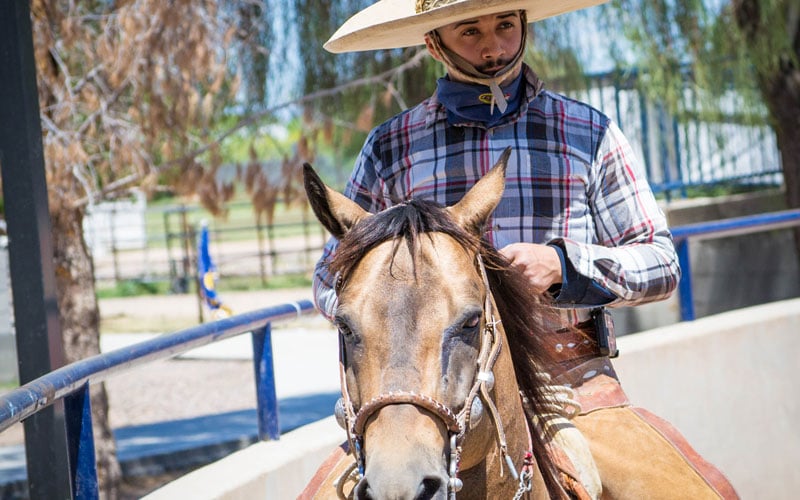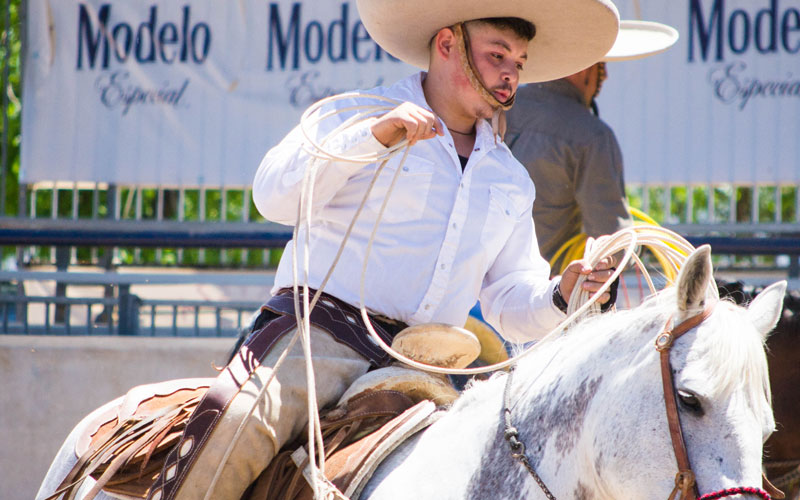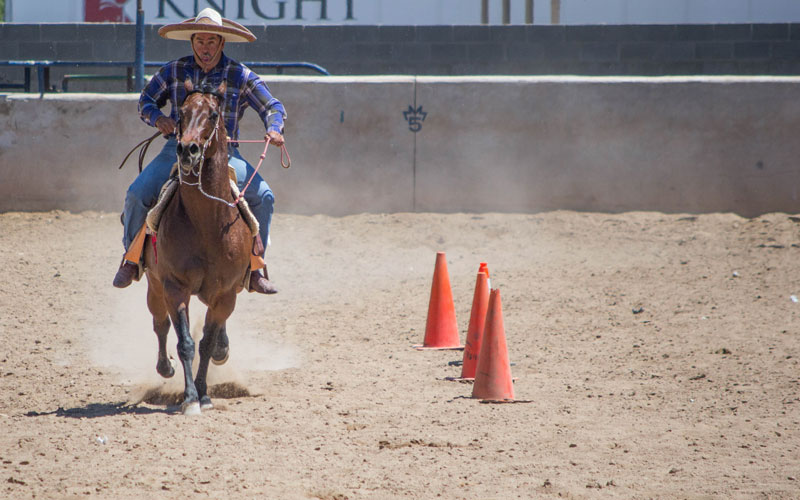Mexico’s oldest sport is young and alive in the United States.
Read more:
Rodeo’s tradition rides on, growing in Arizona and the West
Coolidge junior college a breeding ground for rodeo success
‘Toughest sport on dirt’ raises questions about animal cruelty
Payson, Prescott hold different ‘world’s oldest rodeo’ distinctions
Rodeo safety: ‘It’s not if you get hurt. It’s when and how bad’
Charrería is a competitive sport similar to rodeo except that performing cowboys, called charros, are judged on style and execution rather than whether they can beat a timer.
“The practice comes from our ancestors’ lifestyles,” said Victor Mendoza, who was taking part in a recent practice at Rancho Ochoa, a rodeo event center in Phoenix. “Hacienda owners would show off their horses to other haciendas, and they would compete to see who was better than who.”
Also known simply as “Mexican Rodeo,” charrería includes nine events for men and one for women. Teams called asociacíones compete against other teams in roping and riding events.
Mendoza, who lives in Phoenix, believes the sport is keeping a Mexican tradition alive.
“My father was a charro. My grandfather was a vaquero (a working cowboy). I am now the third generation of charros in my family,” Mendoza said. “I do pretty much everything in the charrería.”
Some of the events involve individual performances, but points are still awarded to the team. Instead of money, charros compete for trophies, plaques and sometimes saddles or horse trailers in charrería events that are part of charreadas, larger celebrations that include a parade of the teams.
Mendoza said this includes events familiar to rodeo, such as riding a bull or roping a horse’s back legs. But there are also events unique to charrerías, such as the cala de caballo – test of horse – in which the charro puts his mount through various commands to demonstrate his skill and the horse’s training.
Other events include coleadero – in which the charro grabs a steer by the tail and tries to pull it down – and manganas a caballo, in which the charro performs rope tricks and loops a rope around a mare, bringing it to the ground.
In response to animal-welfare activists, some states — including Arizona — have passed legislation that has resulted in changes to the rules for some events in Mexican rodeos held in the U.S., including manganas a caballo. In the U.S. the mare is not brought to the ground.
“We always like to make sure the animals are well taken care of,” Mendoza said. “There’s always a vet on scene. We take very good care of our animals (so) there will be very minimal danger for them.”
The grand finale of the charreria is the dramatic El Paso de la Muerte, or “pass of death,” during which the charro must leap from his trained horse onto a wild one. Mendoza said the wild horse wears, “no saddle, no bit, no anything” and the charro must try to bring it under control.
“There’s lot of dangers in the sport from breaking an arm to breaking a leg, breaking a hand, chopping off a finger while roping,” Mendoza said. “It’s very, very dangerous.”
Charrería was introduced to Mexico from Spanish horsemen in the 16th century and developed from old practices used in animal industries in the estates of old Mexico. By the 19th century, estates began competing against each other to demonstrate their skills.
Mexican-Americans hoping to keep traditions alive introduced charrería to the United States and the first official charreadas were formed north of the border in the 1970s.
“I feel proud to have my traditions here in the U.S. because this way my children can learn and even participate in the traditions that I grew up with,” said Irene Vargas, a fan of the sport who also has children that compete.
The U.S. charrerías are not yet as popular as the Mexican versions.
“In Mexico it’s more of a big deal,” Mendoza said. “There’s more audience for it. There’s better sponsorship. It’s more of a professional level versus here.
“Charros from the United States have gone to Mexico to charrear (compete in charrerías) but it’s a lot more competitive.”
Participants in charrería are required to wear traditional charro clothing that includes a tight-fitting suit, sombrero, chaps, belt, boots and spurs. The outfits are decorative and follow a matching pattern from head to toe. They are similar to the outfits worn by mariachi musicians.
The sport has expanded to include women, who have their own costumes.
In 1992, escaramuza was added for women. It is an equestrian demonstration that features teams of eight women performing precision maneuvers while riding sidesaddle on horseback. The women compete while wearing uniforms of 19th Century female Mexican soldiers.
For those who accept the challenge of charrería, the difficult sport is a way to bring Mexican culture and tradition to life.
“It takes a lot of discipline, a lot of hours practicing to make sure everything comes out like you would like it to,” Mendoza said.




